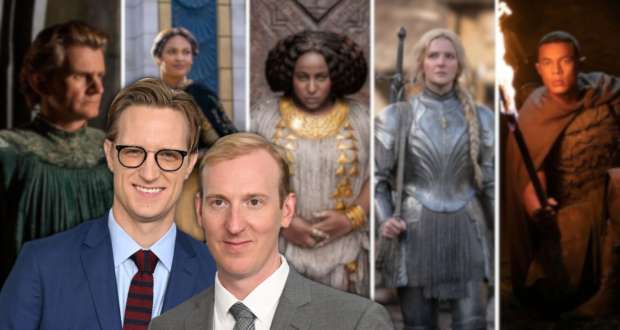In today’s digital world, 3D character modeling has become a pivotal element in the creation of engaging and immersive virtual worlds. It’s a craft that intersects the realms of gaming, animation, and interactive media, serving as the foundation for characters that populate everything from video games and animated films to virtual reality (VR) and augmented reality (AR) experiences. As the demand for more detailed, lifelike, and expressive characters grows, the role of 3D character modeling has become more critical than ever. This article explores the exciting intersection of gaming and animation through 3D character modeling, and dives into the services provided by professionals who specialize in creating these intricate digital personas.
What is 3D Character Modeling?
3D character modeling is the process of creating a three-dimensional representation of a character or object using specialized software. These models can be static or dynamic (able to move and interact) and are used in a variety of industries, most notably in gaming and animation. The models are made up of polygons—small flat surfaces that form the character’s shape—and can range from simplistic low-poly designs to highly complex, photo-realistic depictions.
The Role of 3D Character Modeling in Gaming
In the world of video games, 3D character modeling is fundamental to creating believable, interactive environments. The process of designing and developing these characters requires a combination of creativity, technical skill, and understanding of human (or creature) anatomy and movement.
- Game Design and Narrative Integration
Video game characters are more than just visual avatars—they are key to delivering a game’s story, theme, and atmosphere. A well-designed character reflects its role in the narrative, conveying personality through visual elements like facial expressions, body language, clothing, and accessories. For instance, Kratos from God of War or Ellie from The Last of Us are not just models—they are embodiments of their respective game’s tone, history, and themes. 3D modeling in gaming serves to give players a visual connection to these characters, enhancing the emotional and narrative impact of the gameplay.
- Animation and Rigging for Interactivity
Once a 3D model is created, it needs to be rigged and animated. Rigging involves the creation of an internal skeletal structure that allows the character to move. This is followed by skinning, which ensures the character’s outer surface moves correctly with the underlying skeleton. These animated movements bring the character to life, whether the model is performing a simple action like walking or executing complex combat maneuvers. In games, interactivity is key: players control these characters in real time, so models must be responsive, fluid, and believable.
- Real-Time Rendering in Video Games
One of the most demanding aspects of game design is the need for real-time rendering. Unlike film animation, where frames are pre-rendered, video games require models that can be rendered quickly and efficiently as players interact with them. To meet this demand, 3D character models are optimized for performance, which often involves simplifying their geometry (low-poly models) while maintaining visual appeal. This optimization ensures that the models perform well across different devices, from high-end gaming consoles to mobile phones, without sacrificing quality.
3D Character Modeling Services
The demand for high-quality 3D character models has grown significantly, creating an entire industry centered around 3D modeling services. These services cater to a variety of sectors, including gaming, animation, VR/AR, 3D printing, and more. Professional 3D character modeling services are provided by skilled artists and studios that specialize in bringing digital characters to life. They utilize cutting-edge tools, such as Autodesk Maya, ZBrush, Blender, and other advanced software, to create detailed and optimized models.
Types of 3D Character Modeling Services
- Game Character Modeling For video games, 3D character modeling services focus on creating highly detailed, animated, and optimized models. These services include:
- Low-Poly and High-Poly Modeling: Low-poly models are optimized for real-time gameplay, while high-poly models are used for cinematic scenes or promotional material.
- Texturing and UV Mapping: Applying detailed textures and mapping them onto the 3D model’s surfaces is a key part of the process.
- Rigging and Animation: Rigging the models with a skeleton structure allows for realistic animation, making the characters move fluidly in response to player inputs.
- Animation Character Modeling For animated films and series, the emphasis is on creating stylized, expressive characters. Services often include:
- Exaggerated and Stylized Designs: Animation models are designed with exaggerated features to communicate emotion and style.
- Advanced Rigging: Facial and body rigging is essential for expressive animation, ensuring that characters can perform nuanced, emotional movements.
- Shading and Texturing for Animation: Textures and shading are applied in a way that enhances the character’s visual appeal while fitting the overall style of the animation.
- VR/AR Character Modeling Virtual and augmented reality experiences require interactive 3D models that can adapt to real-time changes. VR/AR services include:
- Real-Time Optimization: Ensuring characters perform efficiently in immersive environments.
- Interactive Rigging: Rigging the models to respond dynamically to user interactions, whether they’re moving in VR or augmenting the physical world with AR.
- 3D Printing Character Models 3D character modeling services are also employed in the production of 3D printed models for toys, collectibles, and other physical items. These services include:
- Sculpting Detailed Models for Printing: Detailed, print-ready 3D models are created for those who want to turn digital characters into physical objects.
- Customization and Prototyping: Customers can create custom models for printing, ranging from action figures to sculptures.
Why Choose Professional 3D Character Modeling Services?
- Expertise and Experience
Professional 3D modelers bring years of experience to the table. They understand the intricacies of character design, animation, and optimization, ensuring that the models meet technical and artistic standards. - High-Quality Output
Professional services use the latest software tools to create characters that are detailed, expressive, and optimized for their intended platforms, whether they’re for games, animation, or VR. - Time and Cost Efficiency
Outsourcing 3D character modeling to professionals saves time and resources, allowing in-house teams to focus on other aspects of development, whether it’s coding, animation, or story development. - Customization and Collaboration
Clients can provide specific creative direction and work closely with 3D modelers to achieve exactly the look and feel they want for their characters, ensuring that the final product aligns perfectly with their vision.
3D character modeling is at the heart of modern gaming, animation, and digital entertainment. It’s a craft that bridges art and technology, creating lifelike characters that drive storylines, enhance gameplay, and immerse audiences in fantastical worlds. As the demand for more detailed, interactive, and expressive characters grows, 3D character modeling services have become essential to meet the needs of diverse industries. Whether you’re a game developer, animator, or VR creator, these professional services offer the expertise and tools needed to bring your digital characters to life in the most compelling way possible.



















